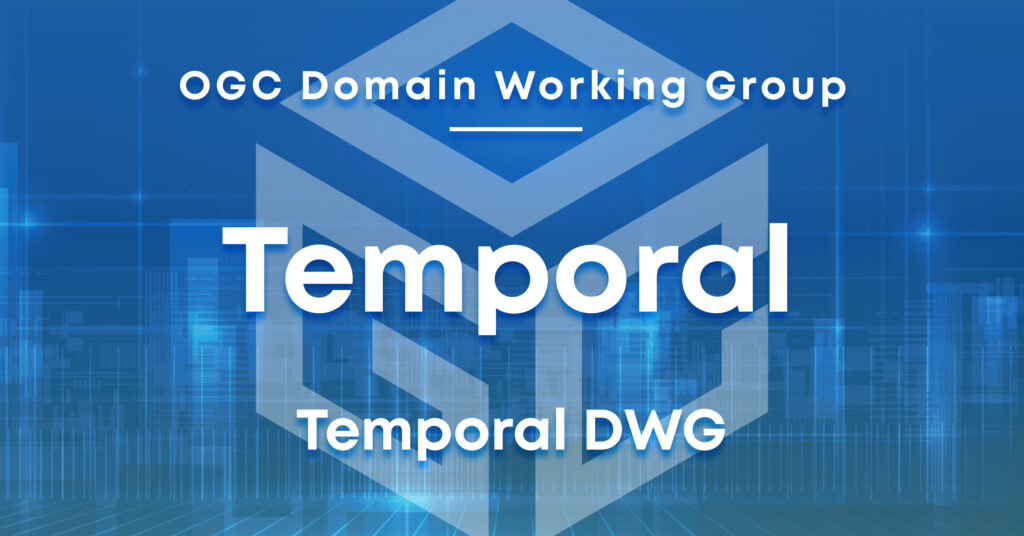OGC announces Christy Monaco as new Chief Operating Officer
As OGC’s COO, Christy will use her experience with federal agencies, partnership-building, event management, and member success to help grow and shape the Consortium.

The goal of the OGC Temporal DWG is to clarify the role of time as a first-class alignment concept next to space, and to strive for a handling of time which is coherent and integrated with that of space.
The DWG is dedicated to positioning the Open Geospatial Consortium as a leading authority on the temporal dimensions of geospatial data and services. This initiative aims to cultivate a consistent and sustainable approach to handling temporal Coordinate Reference Systems (CRSs) across OGC standards. By ensuring the seamless integration of temporal aspects with external standards, the DWG strives to enhance interoperability and accuracy in geospatial information handling. Furthermore, the group is committed to fostering a community of experts capable of defining and implementing best practices.
The utilization of web services for analyzing and presenting historical geospatial data presents a complex array of technical challenges and awareness gaps. Technical methods, such as mapping data times to video frames, must accurately represent data in relation to other datasets, taking into account changes such as the transition from the Julian to the Gregorian calendar, which occurred as late as 1923 for some countries. This complexity is compounded when dealing with historical data from sources like diaries and ships’ logs, where date conversions by software libraries may not account for calendar changes or historical shifts in country boundaries, leading to potential timing errors. Challenges also arise in the statistical summarization of data, where ambiguous time labeling and irregular time series can complicate data comparison and representation. Additionally, the expansion of web services to include data from other planets introduces new dimensions of complexity, such as different time coordinates and calendars. This broad spectrum of issues highlights the need for improved algorithms, software, and data labeling practices to prevent misinformation and enhance the accuracy of the temporal aspects of geospatial information processing.
The Temporal Domain Working Group (DWG) is committed to a comprehensive set of activities aimed at enhancing the handling and processing of temporal data within the geospatial community. These activities include identifying and disseminating educational materials to aid software developers in creating accurate applications, and publishing a Best Practice document tailored to the diverse needs and use cases across various communities. The DWG plans to establish a temporal conceptual model to ensure a realistic approach to addressing OGC’s temporal challenges. Additionally, the creation of a registry for temporal information and reference values is underway, which will be initially hosted by the OGC Naming Authority, providing essential support for both manual and automatic processing of time metadata. This initiative will also extend beyond the OGC to develop a community of individuals and organizations interested in temporal issues related to geospatial data, fostering broader engagement and collaboration in addressing these complex challenges.
The DWG collaborates with external groups such as ISO / TC 211 as well as other OGC working groups.
Working Group Chairs: Chris Little (UK Met Office), Peter Baumann (Constructor University Bremen gGmbH)
Receive the latest news on OGC.
© 2024 Open Geospatial Consortium. All Rights Reserved.